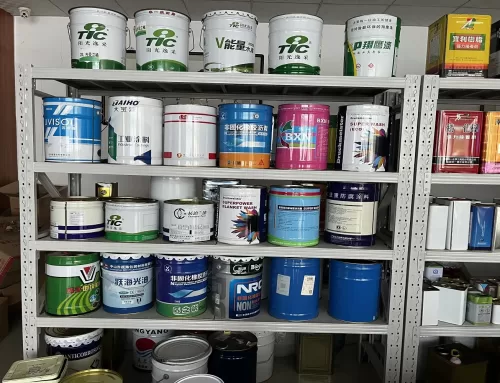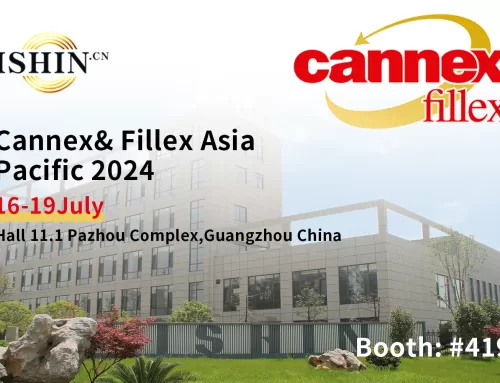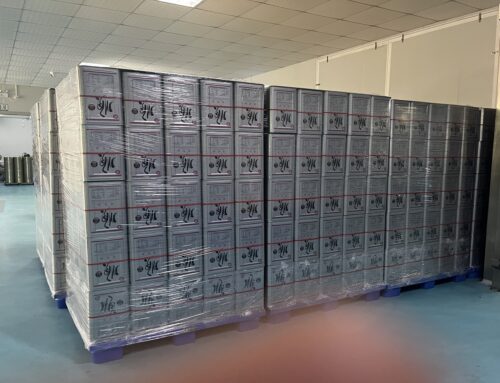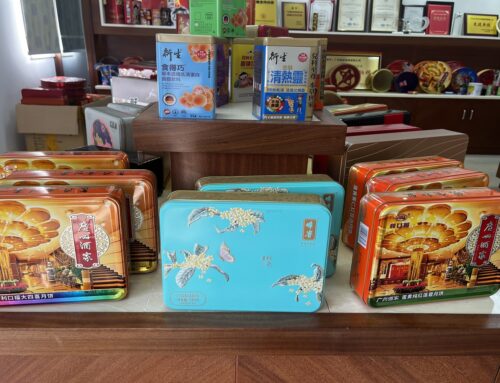The more advanced the material civilization is, the more packaging containers are used and the more beautiful they are made. From the development of food packaging containers, we can also get a glimpse of how human life forms and qualities have evolved.
Friends over the age of 50 or 60 have experienced the economic development of the new China and the changes in material life, so they often like to tell their younger generations how their lives were caused by hardships, and are afraid that young people don’t understand how they grow out of adversity. . People who grow up in a difficult situation often have some “old” problems. When some elderly people see the trash cans filled with bottles, cans, cans and other containers, they often can’t get used to them, and they complain: “When I was a child, if I can see that there are a few bottles in the trash can, and the looters have long picked up and exchanged a few cents of change, which would be as good as modern people and so wasteful.” Indeed, in the era of harder material life, food packaging containers are rough. , But also rare and precious.
In ancient times, when people needed containers to hold food, they usually looked for gourds, bamboo knots, large curled leaves or large shells from nature. Later, there were containers made from natural resources, such as hollowed out wood, woven straw baskets, and even animal organs, such as horns and stomachs, or containers made of leather. About 8,000 years ago, humans began to know how to make pottery, which can be used to hold food, store food, and even cook food. Later, pottery became the mainstream of food packaging containers. Three thousand years ago, glass developed from ceramic glaze came out and gradually developed into a container. However, the industrial production of glass containers has only appeared in the past two hundred years.
On the other hand, about two thousand years ago, during the Eastern Han Dynasty in China, Cai Lun invented paper, which was gradually used to package food. The development of metal containers can be traced back to the Bronze Age. Our ancestors knew how to use metal materials to make containers to hold food. However, packaging food in metal cans to enable long-term storage of food began in the United Kingdom about two hundred years ago. As for the plastics currently occupying a more important position in food packaging, it is the younger type of packaging materials. It only emerged in the early nineteenth century, and it began to gradually develop into the mainstream material of food packaging containers 50 to 60 years ago.
1. Current status of traditional food packaging containers
In today’s highly developed material civilization, food packaging containers have become an indispensable product that can be seen everywhere in life. A variety of beautifully crafted and eye-catching packaged foods are displayed on the shelves of various stores. The variety of them is often dazzling. A closer look at these packaging materials is nothing more than plastic, metal, glass and paper. Of course, some materials are composites of these four materials, which makes food packaging containers diversified.
1. Plastic packaging container
The rise of plastic packaging materials is closely related to the changes in people’s lifestyles. Due to the rapid growth of the population and the increasing pressure of food shortages, how to use economical and portable packaging to facilitate the storage and transportation of food and increase the shelf life of food has become very important. Plastic packaging materials can meet these needs.
What are the properties of plastic packaging materials that make them so easy to use? Generally speaking, due to the low density of plastic, it is much lighter than metal or glass, and it is lighter in processing or use. Plastic has strong toughness. It is not as easy to break as glass. It is not as easy to dent as cans under pressure, and it is not as easy to be torn as paper. Many plastic materials are easy to shape, and a little heating can soften it and give it a certain shape, as long as the temperature is lowered, it can be shaped. We often see that when plumbers connect plastic water pipes, they can soften the plastic pipes and make them into various shapes by heating them with a little flame.
Many plastics melt easily when heated, making it easy to seal. In many stores, you can see the clerk putting food in plastic bags, which can be sealed with a heat sealer, which is very convenient. In addition, it is very important that the current technology makes plastic packaging materials have good barrier properties, no matter it is water vapor or oxygen, it is not easy to pass through the plastic container, so the storage time can be extended.
Plastic is a polymer material formed by the polymerization of many so-called “monomers” one by one. The molecular weight is about five thousand to one hundred thousand. Some plastics are composed of more than one monomer, forming so-called polymers, which can have special properties. There are many types of plastics commonly used in food packaging containers, including polyethylene, polypropylene, polyvinyl chloride, polystyrene, etc., with different properties.
As far as the demand for food packaging containers is concerned, the more important properties include toughness, air permeability, water vapor permeability, heat sealability, and heat resistance. In order to produce plastic packaging materials that meet special needs, sometimes different materials are laminated to form a so-called composite film, so that the overall properties of the packaging materials are more in line with the needs.
2. Metal packaging container
Using metal to make cans to package food is a simple and effective way to preserve food. The two metals commonly used in can making are tinplate and aluminum. The main body of tinplate is thin steel plate. The thin steel plate is placed in the molten tin, and the tin is plated on the thin steel plate to make the so-called tinplate. In order to improve the corrosion resistance of tinplate, it is heated to produce tin-iron alloy between the tin layer and the steel layer; then chromium compounds are used to form chromium oxide on the tin layer, so that the tinplate is not easily oxidized and deteriorated. In order to lubricate the surface of the tinplate, make it easy to shape when making cans, and prevent rust, a very thin layer of oil is applied.
Therefore, the seemingly simple tin cans are not so simple in structure. In order to further prevent the ingredients in the food from causing corrosion of the tank wall, tinplate is often coated with a layer of paint. According to the characteristics of the food, there is one painting or two paintings. Coatings are high-molecular components, such as epoxy resins, acrylic resins and polyester resins. After painting, it is usually cured by baking.
Aluminum is a metal with good ductility. Since aluminum is in contact with air, it is easy to form a thin film of aluminum oxide on the surface, so it has good corrosion resistance. However, this aluminum oxide film is easily damaged when it encounters halogen ions (such as chloride ions in table salt), so in practice, it is still necessary to coat a layer of polymer film to avoid being corroded by the ingredients in the food.
Metal cans are a kind of packaging container that has good airtightness and can completely protect food. The food can be stored for several years without spoilage after being sealed and sterilized in metal cans. However, modern people’s dietary concept is based on “freshness” as the mainstream demand, which makes the popular metal cans gradually decline. However, in any case, metal cans are still a very important food packaging container in the foreseeable future.
3. Glass packaging container
Glass is made by melting quartz sand, sodium carbonate, limestone and other additives at a high temperature of about 1500°C. Put a small mass of molten glass into a mold and blow it into the shape of a container. After cooling and annealing, it can be made into a glass container for food packaging. Modern equipment can produce more than 100 glass containers per minute, making glass containers a place in food packaging. The use of glass to package food has many advantages: it will not corrode, water vapor, oxygen and aroma can not penetrate, excellent barrier properties, transparent, hygienic, odorless, recyclable, microwaveable, can withstand high temperature sterilization… etc. . However, because glass containers are not impact-resistant, fragile, and heavier than containers made of other materials, their application is also subject to some restrictions.
4. Paper packaging container
According to different raw materials, paper can be divided into wood pulp paper, non-wood plant fiber paper, and recycled paper. General papermaking procedures include the main steps of pulping, preparation, papermaking, and processing. In order to increase the durability of paper and make it suitable for food packaging containers, chemical additives such as wet strength agents, desiccants, and oil repellents are often added during the papermaking process. However, additives that are safe and comply with regulations must be used, otherwise they will dissolve into the food after packaging the food and affect the health of the body.
2. The development of new food packaging containers
Many food packaging containers can be developed using the above four packaging materials. The following is a brief introduction to the more important development projects in recent years.
1. Microwaveable packaging container
The development of food packaging containers changes with people’s lifestyles. Since microwave technology began to be used in food heating after 1970, research on the influence of packaging materials or containers on microwave heating has been vigorously carried out. Such as the safety issues that may arise from microwave heating of packaging materials, the phenomenon of uneven heating of food during microwave heating and its relationship with the shape of the packaging container, etc., are all topics for discussion. At present, there are already many packaged foods on the market that can be stored and frozen at room temperature for a long time and can be directly heated by microwave.
In order to solve the problem of insufficient crispiness of fried food after microwave heating, heating tablets are added to many packaging containers. The heating plate is made of metal and plastic bonded together, which will quickly generate temperature in the presence of microwave, so it can make the food in contact with it appear crispy or browned. It is often used for frozen pizza and other foods. Heating pads are also used for popcorn products that require rapid heating and can be microwaved. Only when local rapid heating is required, the corn can expand rapidly.
Most people may have a concept that metal containers cannot be heated in a microwave oven, otherwise it will cause sparks and cause danger. However, modern packaging technology has combined metal and plastic, that is, plastics are glued to steel plates with adhesives to make easy-open cans, lunch boxes and other packaging containers, which can be directly heated by microwaves, which is very convenient.
2. Degradable food packaging container
The massive use of food packaging containers has caused serious environmental problems. Therefore, the food packaging industry and academia have paid great attention to the research and development of degradable materials in recent years. There are three types of degradable packaging materials: one is biodegradable materials, which are decomposed into carbon dioxide and water by microorganisms in the environment; the other is photodegradable materials, which use ultraviolet rays in sunlight to promote the decomposition of macromolecules in packaging materials. The main chain breaks and degrades it; the third category is oxidative degradation materials, which, as the name suggests, are decomposed by the formation of oxides by the action of packaging materials and oxygen. Some degradable packaging materials achieve the purpose of degradation through the combination of the aforementioned degradation mechanisms. In any case, biodegradable food packaging materials are more valued.
There are many types of biodegradable packaging materials. Natural raw materials such as starch, vegetable protein (such as corn gluten), chitosan, and cellulose are used to make packaging containers after chemical modification. Some synthetic polymers are inherently biodegradable and can be used as raw materials for packaging containers. However, most of these containers made of biodegradable materials have the problem of poor gas or water vapor barrier properties, which limits their application.
3. Aseptic packaging container
Aseptic packaging is one of the important development projects of modern food. In order to achieve the purpose of long-term storage of food, the food is generally packaged in metal cans or sterilized soft bags, and then sterilized by high-pressure and high-temperature methods. However, aseptic packaging uses a different method. It sterilizes the food and packaging materials separately, and then uses the aseptic packaging materials to package the aseptic food in an aseptic environment, so that the packaged food produced can also be like Canned food is stored at room temperature for a long time.
We can often sell milk or juice drinks that do not require refrigeration and are rectangular in appearance on the market. They are all manufactured in aseptic packaging. However, the packaging box that looks like a carton is not simple in structure. It is often composed of five to seven layers of soft materials, including plastic, aluminum foil, and cardboard. Only in this way can a box that can stand upright, has good barrier properties, and can Products that fully protect food.
4. Active packaging container
Traditional food packaging methods, strictly speaking, adopt negative protective measures, using the barrier properties of the material itself and the sealing properties when forming the container to block the food from the external environment, so as to achieve the purpose of protecting the food. The active packaging system developed in recent years adopts more active measures to protect food. Active packaging is the use of special materials or devices that will interact with the air or food inside the package after packaging the food to achieve the purpose of extending the storage period of the food.
There are many types of active packaging, the more common ones are deoxygenated packaging systems, packaging systems that control carbon dioxide generation or adsorption, ethylene adsorption systems, packaging systems containing preservatives (preservatives, antioxidants), and moisture-controlled packaging systems. In terms of controlling gas composition (oxygen and water vapor), it is more common to put deoxidizers or desiccants in food packaging containers.
Deoxidizers can be divided into two categories according to their composition. One is based on inorganic compounds (such as ferrous sulfate), and the other is based on organic compounds (such as yeast, vitamin C, linoleic acid, and vitamin E). These deoxidizers all use themselves to react with the oxygen in the packaging container and consume it so as to prevent the food in the container from deteriorating due to the influence of oxygen.
In addition to putting deoxidizer or desiccant packets in food packaging containers, some people also make them into thin sheets and stick them directly into the container. For example, there is a US patent that mixes iron powder with activated carbon and sodium chloride solution and then dried, then mixes the dried powder with pulp and polyethylene, and coats it on a non-woven fabric. Then, the non-woven fabric with a deoxidizer is applied. Sandwiched between two layers of highly air-permeable plastic films, it becomes a deoxidizing patch that can be attached to the inner wall of the packaging container.
In addition, there are also deoxidizers placed in the caps. There is also a beer bottle that mixes live dry yeast powder with wax and coats it on the PE film lining the bottle cap. During storage, the moisture of the beer will gradually penetrate into the wax to activate the yeast. Yeast consumes oxygen when it grows and metabolizes, so it just keeps the flavor of beer.
Similar to the deoxygenation function, a chemical reaction can also be used to generate carbon dioxide in the packaging container to increase the shelf life of the food. For example, adding carbonates and organic acids to the aforementioned deoxygenation formula will release carbon dioxide when the carbonates decompose in water and react with the organic acid.
In the design of moisture-proof food packaging containers, moisture-proof packaging materials are first required. Glass and metal are basically moisture-proof, but they are not suitable for foods that need to be packaged in soft materials. Generally, flexible packaging materials often need to use composite film to prevent moisture. For example, the composite material of paper-PE-aluminum foil-PE has a good moisture-proof effect. There is a Japanese flexible packaging material called “Toyal Dry”. The middle layer contains moisture-absorbing resin, which can absorb the same weight of water. It is a flexible packaging material that can completely prevent moisture.
Adding preservatives such as anti-corrosion or antioxidants directly to food can extend the shelf life of food, and this is also a common method when processing food. However, the spoilage of food usually starts from the surface. It is somewhat redundant to mix preservatives or antioxidants in the whole food. One type of packaging material is designed to solve this problem. The idea is very simple, just add preservatives or antioxidants to the packaging materials. After the food is packaged, when the packaging material is in close contact with the food, the preservative can be released on the surface of the food to achieve the effect of preserving the food. However, because the preservative will diffuse from the surface of the food to the inside of the food, the surface concentration will be reduced, and the effect of protecting the food will be lost.
Therefore, how to control the release rate of the preservative and maintain a certain concentration on the food surface is an important issue. A company in Japan has developed an antimicrobial membrane with zeolite and a certain metal added to the membrane. It is reported that after the film is packaged for food, due to the presence of moisture and oxygen, zeolite interacts with metals to produce active oxygen, which can inhibit the growth of microorganisms after being released.
In the past ten years, there have been many changes in the social structure and consumption behavior of China and even the advanced countries in the world. Small families or single-parent families and the single population account for an increasing proportion of the society. Professional women have increased significantly. Couples working in other places at the same time are the norm for young families. The increase in the elderly population, the increase in the population dining out, and environmental protection demands, etc. All have affected the development of food packaging and containers. Food packaging technology has been working hard to adapt to the needs of the times and change. People who study history often learn about the evolution of the times and the ways of people at that time from stoneware, pottery, ironware, etc., based on the utensils used by the ancients. In the future, historians will be more able to judge our social activities today based on the development of food packaging containers.




